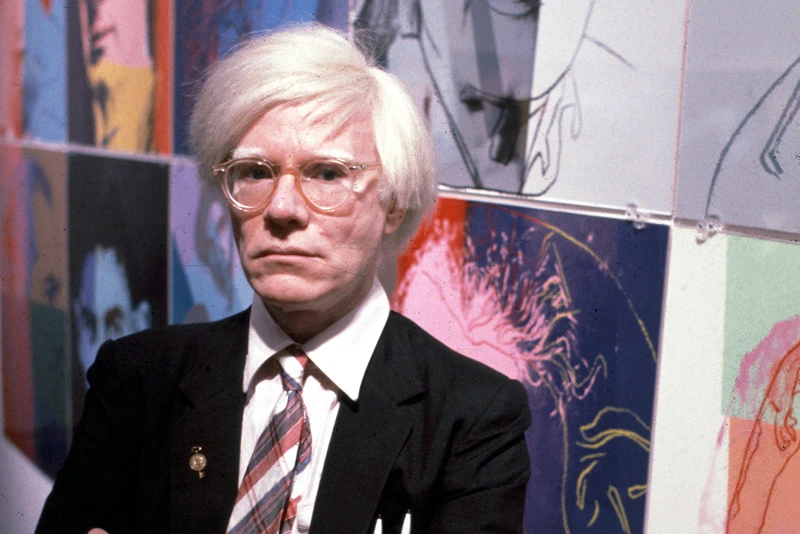

OAN’s Brooke Mallory
12:14 PM – Thursday, May 18, 2023
The Supreme Court has ruled on Thursday that American visual artist Andy Warhol’s silkscreens of musician Prince violated the copyright of a well-known photographer who captured the original image.
Advertisement
The court had ruled 7-2 in favor of photographer Lynn Goldsmith, finding that Warhol’s Prince piece did not qualify as “fair use” under copyright law. This ruling will likely have a significant effect on a number of creative industries. The decision favors those who own copyrighted materials that serve as the foundation for other works, but it could also be detrimental to those who typically produce new works based on previously published materials.
“This is a great day for photographers and other artists who make a living by licensing their art,” Goldsmith said in a statement.
One of the many variables considered when determining whether a work is infringing on someone else’s copyright is whether it will be used for commercial purposes. In a decision ruled by Justice Sonia Sotomayor, the court concluded that Warhol’s creation did not serve a sufficiently distinct commercial purpose from Goldsmith’s original photograph, which have both served as illustrative pieces for magazine articles on the musician.
The images “share substantially the same purpose, and the use is of a commercial nature,” and the late artist’s foundation had “offered no other persuasive justification for its unauthorized use of the photograph,” according to Justice Sotomayor.
However, the justice also brought up how some could consider this finding to be too restrictive and pointed out that other Warhol creations, such as his well-known depictions of Campbell’s soup cans, could now possibly be subject to alternative analysis as well.
Goldsmith’s photographs had been used for the same reason as the Prince art piece, which was to accompany a magazine feature, however, the soup can series “uses Campbell’s copyrighted work for an artistic commentary on consumerism,” Sotomayor added.
In a sharp dissenting opinion, fellow Democrat justices, Justice Elena Kagan and Chief Justice John Roberts criticized Sotomayor’s ruling.
“Because the artist had such a commercial purpose, all the creativity in the world could not save him,” she wrote. The decision will limit artistic expression and innovation since any product that incorporates preexisting materials could now be in violation of copyright laws, according to Kagan.
She claimed that most articles ignored Warhol’s contribution to changing the nature of the photographs by focusing instead on the fact that he had entered into a business partnership with the magazine.
The ruling “hampers creative progress and undermines creative freedom,” she added.
Kagan also scoffed at Sotomayor’s breakdown of the soup can art, saying the court was “slicing the baloney pretty thin.”
The case brought up a legal problem that could be dire to those who work in creative industries, such as fine art, film, and television. The court battled with how to characterize the situation in order for new work to be created from pre-existing work while being deemed “transformative,” and not violating copyright regulations. Depending on the circumstances, such as when a new work expresses a different meaning or message, a limited “fair use” of an already-existing work of art is permitted, according to the law.
Goldsmith had filed the lawsuit against the Warhol estate for using her photo of Prince taken in 1981, when he was still just a rising star and before he became world famous, thanks to songs like “Little Red Corvette” and “When Doves Cry.” Three years later, as part of a deal with Vanity Fair magazine, Warhol produced a number of silkscreen prints and two pencil sketches based on Goldsmith’s image. The silkscreen prints were created over a cropped version of the original photo of Prince, which was originally in black and white.
The design resembled other well-known Warhol pieces, like his portraits of Marilyn Monroe.
Vanity Fair had used a Warhol graphic based on the photo in its November 1984 issue without any issues, thanks to a license that the magazine acquired from Goldsmith. However, the photographer said that she was unaware Warhol had produced further works that were not authorized by her. She learned this information only after Vanity Fair publisher Condé Nast published a different image as part of a 2016 Prince memorial shortly after the musician’s passing.
Warhol passed away in 1987, and the Andy Warhol Foundation now owns the relevant works and copyrights, granting Vanity Fair permission to reproduce the photo in 2016. However, Goldsmith did not receive a credit. The next year, Goldsmith and the foundation filed lawsuits against one another to resolve the dispute over whether or not using Warhol’s photograph was considered fair use.
While Warhol Foundation president Joel Wachs expressed disappointment with the ruling, he added, “We welcome the court’s clarification that its decision is limited to that single licensing,” indicating that the decision did not have wider ramifications for future usage of the Prince photos.
A federal judge ruled in favor of the foundation in 2019 and stated that Warhol’s works were transformative because, in contrast to Goldsmith’s photograph, which revealed a “vulnerable human being,” the Warhol prints displayed a “iconic, larger-than-life figure.”
Following a March 2021 decision by the 2nd U.S. Circuit Court of Appeals in New York which favored Goldsmith, the foundation petitioned the Supreme Court for further review. By emphasizing the artist’s intention, the district court made a mistake, according to the appeals court, which stated that a judge “should not assume the role of art critic.” The court ruled that a judge must instead consider whether the piece has an entirely different character from the original.
The work has to “at a bare minimum, comprise something more than the imposition of another artist’s style on the primary work,” the court added.
In the context of the case, the justices also discussed a significant Supreme Court precedent that was referenced by both sides. In that 1994 decision, the court determined that 2 Live Crew’s creation of the song “Pretty Woman,” which was a parody of Roy Orbison’s “Oh, Pretty Woman,” qualified as fair use.
Several interested parties, including organizations from the film and music industries, academic institutions, and individual artists, submitted briefs advising the justices on what the best course of action would be.
Stay informed! Receive breaking news blasts directly to your inbox for free. Subscribe here. https://www.oann.com/alerts





Be the first to comment